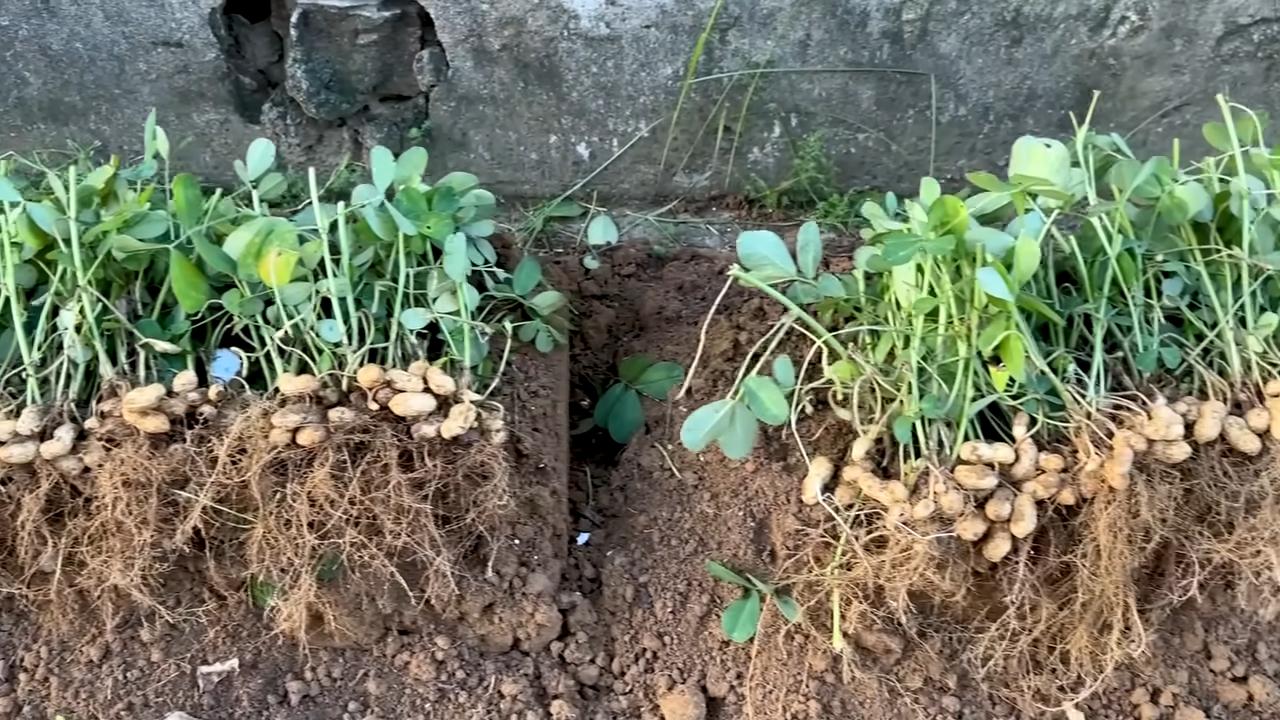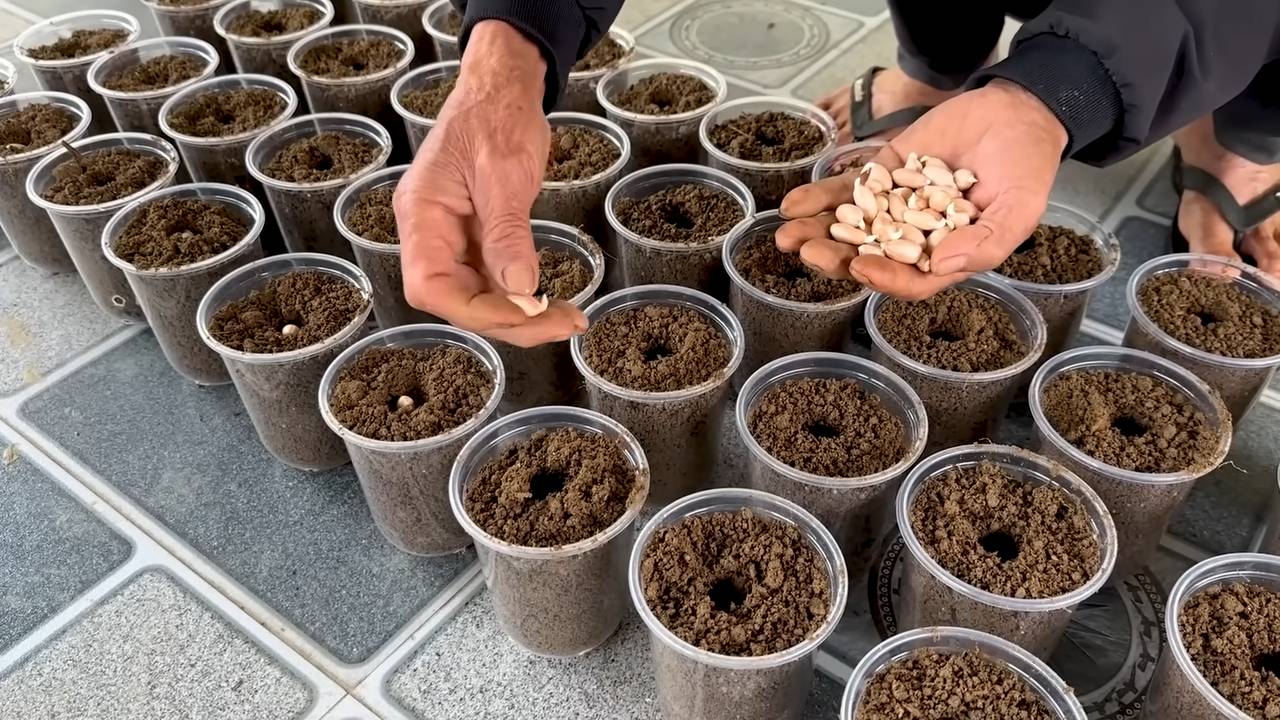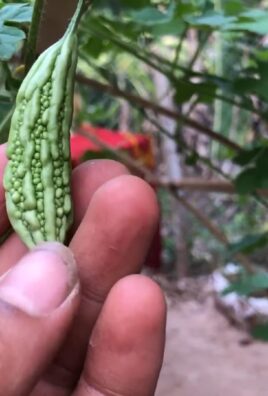Foam Box Peanut Growing: Ever dreamt of harvesting your own delicious, homegrown peanuts right in your backyard, or even on your balcony? Forget sprawling fields – I’m here to tell you that you can cultivate these nutty delights in a simple foam box! It might sound unconventional, but this DIY project is surprisingly effective and incredibly rewarding.
Peanuts, with their rich history dating back thousands of years to South America, have become a beloved snack and a staple ingredient in cuisines worldwide. From ancient Incan tombs to modern-day peanut butter sandwiches, their journey is a testament to their versatility and nutritional value. But did you know that growing them yourself is easier than you think?
In today’s fast-paced world, reconnecting with nature and understanding where our food comes from is more important than ever. Many of us lack the space for a traditional garden, or the time to dedicate to extensive landscaping. That’s where this foam box peanut growing hack comes in! It’s a perfect solution for urban dwellers, apartment residents, or anyone looking for a fun and manageable gardening project. Plus, imagine the satisfaction of sharing your homegrown peanuts with friends and family – a truly unique and delicious experience!
This article will guide you through each step of the process, from selecting the right foam box to nurturing your peanut plants to a bountiful harvest. So, grab your gardening gloves, and let’s embark on this exciting journey of growing your own peanuts in a foam box!

Growing Peanuts in a Foam Box: A Fun DIY Project!
Hey there, fellow gardening enthusiasts! Ever thought about growing your own peanuts? It’s surprisingly easy and rewarding, and you don’t even need a huge garden. I’m going to walk you through how to grow peanuts in a foam box – a perfect solution for small spaces or if you just want a contained growing environment. Let’s get started!
What You’ll Need
Before we dive in, let’s gather our supplies. This is what you’ll need to successfully grow peanuts in a foam box:
* A Foam Box: Choose a sturdy foam box that’s at least 12 inches deep and wide. The bigger, the better, as peanut plants need room to spread their roots. You can often find these at grocery stores or fish markets – just ask if they have any they’re willing to give away.
* Peanut Seeds: You can’t just use roasted peanuts from the store! You need raw, unroasted peanuts in their shells. Virginia peanuts are a good choice, but any variety will work. You can find these at garden centers or online.
* Potting Mix: Use a high-quality potting mix that drains well. Avoid using garden soil, as it can become compacted and hinder root growth.
* Drill or Screwdriver: For creating drainage holes in the foam box.
* Watering Can or Hose: For watering your peanut plants.
* Optional:
* Fertilizer: A balanced fertilizer (like 10-10-10) can help boost growth.
* Mulch: Straw or wood chips can help retain moisture and suppress weeds.
* Gloves: To keep your hands clean.
Preparing the Foam Box
This is a crucial step to ensure proper drainage and prevent waterlogging, which can be detrimental to peanut growth.
1. Drill Drainage Holes: Using your drill or screwdriver, create several drainage holes in the bottom of the foam box. Space them about 4-6 inches apart. This will allow excess water to escape and prevent root rot. I usually aim for at least 6-8 holes, depending on the size of the box.
2. Clean the Box: If the foam box was previously used, give it a good cleaning with soap and water to remove any residue or contaminants. Rinse thoroughly.
3. Optional: Line the box: While not strictly necessary, lining the box with landscape fabric can help prevent the potting mix from seeping out through the drainage holes. Cut the fabric to size and secure it to the inside of the box with staples or tape.
Planting the Peanut Seeds
Now for the fun part – planting the seeds!
1. Soak the Seeds (Optional): Soaking the peanut seeds in water for 24 hours before planting can help speed up germination. This is especially helpful if you live in a cooler climate.
2. Fill the Box with Potting Mix: Fill the foam box with potting mix, leaving about 2-3 inches of space at the top. Gently pat down the soil to remove any air pockets.
3. Plant the Seeds: Plant the peanut seeds about 1-2 inches deep and 6-8 inches apart. If you’re planting multiple rows, space them about 12 inches apart.
4. Water Thoroughly: After planting, water the soil thoroughly until water drains out of the drainage holes. This will help settle the soil and provide moisture for germination.
Caring for Your Peanut Plants
Peanuts are relatively low-maintenance, but they do need some attention to thrive.
1. Watering: Keep the soil consistently moist, but not waterlogged. Water when the top inch of soil feels dry to the touch. Avoid overhead watering, as this can promote fungal diseases. I prefer to water at the base of the plants.
2. Sunlight: Peanut plants need at least 6-8 hours of sunlight per day. Place your foam box in a sunny location. If you don’t have enough sunlight, you can supplement with grow lights.
3. Fertilizing (Optional): If you choose to fertilize, apply a balanced fertilizer (like 10-10-10) every 4-6 weeks. Follow the instructions on the fertilizer package. Be careful not to over-fertilize, as this can burn the plants.
4. Weeding: Keep the foam box free of weeds. Weeds can compete with peanut plants for nutrients and water. Hand-pull any weeds that appear.
5. Hilling: As the peanut plants grow, you’ll notice small yellow flowers appearing. After the flowers fade, “pegs” will emerge from the base of the plant and grow downwards into the soil. These pegs are where the peanuts will develop. To encourage peanut production, gently hill the soil around the base of the plants, covering the pegs with soil. This provides a dark, moist environment for the peanuts to grow. I usually do this every few weeks.
6. Pest Control: Peanut plants are generally pest-resistant, but they can be susceptible to aphids, spider mites, and other common garden pests. Inspect your plants regularly for signs of infestation. If you find pests, you can treat them with insecticidal soap or neem oil.
Harvesting Your Peanuts
Harvesting is the most exciting part!
1. Timing: Peanuts typically take 120-150 days to mature. You’ll know they’re ready to harvest when the leaves start to turn yellow and the plant begins to die back. This usually happens in the fall.
2. Digging Up the Plants: Carefully dig up the entire peanut plant, being careful not to damage the peanuts. Use a garden fork or shovel to loosen the soil around the plant.
3. Cleaning the Peanuts: Shake off as much soil as possible from the peanuts. Then, wash them with water to remove any remaining dirt.
4. Curing the Peanuts: Curing is essential for developing the flavor of the peanuts. Spread the peanuts out in a single layer on a screen or tray in a well-ventilated area. Allow them to dry for 2-3 weeks, or until the shells are completely dry and brittle.
5. Storing the Peanuts: Once the peanuts are cured, you can store them in a cool, dry place in an airtight container. They can be stored in their shells or shelled.
Troubleshooting
Here are a few common problems you might encounter and how to solve them:
* Poor Germination: If your peanut seeds don’t germinate, make sure they’re fresh and viable. You can also try soaking them in water for 24 hours before planting. Ensure the soil is warm enough (at least 65°F).
* Yellowing Leaves: Yellowing leaves can be a sign of nutrient deficiency. Try fertilizing with a balanced fertilizer. It could also be a sign of overwatering, so check the soil moisture.
* Lack of Peanuts: If your plants are growing well but not producing peanuts, make sure you’re hilling the soil around the base of the plants to cover the pegs. Also, ensure they are getting enough sunlight.
* Pest Infestation: Treat pest infestations with insecticidal soap or neem oil.
Additional Tips for Success
* Choose the Right Variety: Different peanut varieties have different growing requirements. Choose a variety that’s well-suited to your climate.
* Improve Drainage: If you live in an area with heavy rainfall, consider adding perlite or vermiculite to the potting mix to improve drainage.
* Protect from Frost: Peanut plants are sensitive to frost. If you live in an area with early frosts, protect your plants with a frost blanket or move the foam box indoors.
* Rotate Crops: Avoid planting peanuts in the same spot year after year. Crop rotation can help prevent soilborne diseases.
Enjoy Your Homegrown Peanuts!
Growing peanuts in a foam box is a fun and rewarding project that anyone can do. With a little bit of care and attention, you can enjoy a delicious harvest of homegrown peanuts. I hope this guide has been helpful. Happy gardening!

Conclusion
So, there you have it! Transforming a simple foam box into a thriving peanut patch is not only surprisingly easy, but also incredibly rewarding. We’ve walked you through the steps, highlighting the simplicity and cost-effectiveness of this DIY project. Forget expensive gardening setups and complicated techniques. This method brings the joy of growing your own food right to your doorstep, balcony, or even a sunny corner indoors.
Why is this foam box peanut growing trick a must-try? Because it democratizes gardening. It makes it accessible to everyone, regardless of space constraints, budget limitations, or prior gardening experience. Imagine the satisfaction of harvesting your own homegrown peanuts, knowing you nurtured them from seed to snack. The taste of freshly dug, organically grown peanuts is simply unparalleled – a flavor you won’t find in any store-bought variety.
But the benefits extend beyond just the delicious harvest. This project is a fantastic learning experience, especially for children. It teaches them about the life cycle of plants, the importance of nurturing, and the rewards of patience. Plus, it’s a fun and engaging way to connect with nature, even in an urban environment.
Looking for variations? Absolutely! Consider these ideas to personalize your foam box peanut growing experience:
* Experiment with different peanut varieties: Try Virginia peanuts for larger nuts, Spanish peanuts for a sweeter flavor, or Runner peanuts for a classic taste.
* Add companion plants: Marigolds can help deter pests, while basil can enhance the flavor of your peanuts.
* Get creative with your foam box: Paint it, decorate it, or even add drainage holes for improved water flow.
* Explore vertical growing: If space is truly limited, consider adapting the foam box into a vertical growing system.
We are confident that you’ll find this DIY foam box peanut growing project to be a fun, educational, and ultimately delicious endeavor. Don’t be intimidated by the prospect of growing your own food. This method is designed for simplicity and success.
Now, it’s your turn! Gather your materials, follow our guide, and embark on your peanut-growing adventure. We can’t wait to hear about your experiences. Share your photos, tips, and triumphs in the comments below. Let’s create a community of foam box peanut growers and inspire others to embrace the joy of homegrown goodness. Happy growing!
Frequently Asked Questions (FAQ)
What type of foam box is best for growing peanuts?
Ideally, you want a foam box that is at least 12 inches deep to allow for proper root development. The length and width will depend on how many peanut plants you want to grow. A standard-sized foam box (around 24 inches long and 18 inches wide) can comfortably accommodate 3-4 peanut plants. Make sure the foam box is clean and free of any harmful chemicals. Food-grade foam boxes are generally the safest option. If you’re using a recycled foam box, ensure it hasn’t been used to store anything toxic.
How often should I water my peanut plants in a foam box?
Watering frequency depends on several factors, including the weather, the size of your foam box, and the type of soil you’re using. As a general rule, water your peanut plants when the top inch of soil feels dry to the touch. Avoid overwatering, as this can lead to root rot. During hot, dry weather, you may need to water daily. In cooler, wetter weather, you may only need to water every few days. A good way to check is to stick your finger into the soil to feel for moisture.
What kind of soil should I use for growing peanuts in a foam box?
Peanuts thrive in well-draining, sandy loam soil. Avoid heavy clay soils, as they can become waterlogged and hinder peanut development. You can purchase a pre-mixed potting mix specifically designed for vegetables, or you can create your own mix by combining equal parts of garden soil, compost, and sand. The compost will provide essential nutrients, while the sand will improve drainage. Ensure the soil is loose and airy to allow the peanut pegs (the stems that develop into peanuts) to easily penetrate the soil.
How much sunlight do peanut plants need?
Peanut plants need at least 6-8 hours of direct sunlight per day to thrive. Choose a location for your foam box that receives plenty of sunlight throughout the day. If you’re growing your peanuts indoors, you may need to supplement with grow lights. Rotate the foam box regularly to ensure that all sides of the plants receive adequate sunlight. Insufficient sunlight can lead to stunted growth and reduced peanut production.
When is the best time to plant peanuts in a foam box?
The best time to plant peanuts is after the last frost, when the soil has warmed up to at least 65 degrees Fahrenheit. Peanuts are warm-season crops and will not tolerate frost. If you live in a colder climate, you can start your peanut seeds indoors a few weeks before the last frost and then transplant them into your foam box once the weather warms up.
How long does it take for peanuts to grow in a foam box?
Peanuts typically take about 120-150 days to mature, from planting to harvest. The exact time will depend on the variety of peanut you’re growing and the growing conditions. Be patient and monitor your plants closely. You’ll know your peanuts are ready to harvest when the leaves start to turn yellow and the pods feel plump and full.
How do I harvest peanuts from a foam box?
Harvesting peanuts is a relatively simple process. Gently loosen the soil around the plants with a garden fork or trowel. Carefully pull the entire plant out of the foam box, being careful not to break the peanut pods. Shake off any excess soil and then hang the plants upside down in a dry, well-ventilated area for about 2-3 weeks to cure. Curing helps to improve the flavor and texture of the peanuts.
Are there any common pests or diseases that affect peanut plants in foam boxes?
Peanut plants can be susceptible to certain pests and diseases, such as aphids, spider mites, and fungal diseases. Regularly inspect your plants for any signs of infestation or disease. If you notice any problems, take action immediately. You can use organic pest control methods, such as insecticidal soap or neem oil, to control pests. To prevent fungal diseases, ensure good air circulation around your plants and avoid overwatering.
Can I grow peanuts in a foam box indoors?
Yes, you can grow peanuts in a foam box indoors, but you’ll need to provide them with adequate sunlight or artificial light. Place the foam box near a sunny window that receives at least 6-8 hours of direct sunlight per day. If you don’t have enough natural light, you can supplement with grow lights. Also, ensure good air circulation and maintain a consistent temperature.
What are the benefits of growing peanuts in a foam box?
Growing peanuts in a foam box offers several benefits, including:
* Space-saving: Foam boxes are ideal for small spaces, such as balconies, patios, or even indoors.
* Cost-effective: Foam boxes are relatively inexpensive and readily available.
* Easy to manage: Foam boxes are easy to move and manage, making it easier to control the growing environment.
* Educational: Growing peanuts is a fun and educational activity for children and adults alike.
* Fresh, homegrown peanuts: Enjoy the delicious taste of freshly harvested, organically grown peanuts.
We hope these FAQs have answered your questions about growing peanuts in a foam box. Remember to experiment, have fun, and enjoy the process!





Leave a Comment